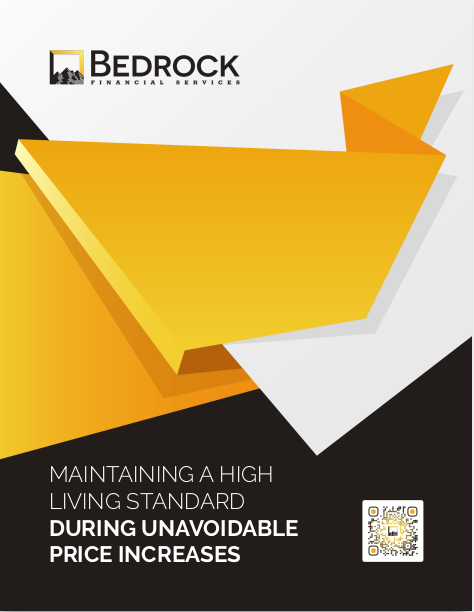Key Takeaways
-
Subject lines, personalization, and sending timing play a much larger role in email open and reply rates than most financial professionals realize. You can’t afford to treat them as afterthoughts.
-
Automating your email process through segmentation, behavioral triggers, and customized follow-up sequences can help you increase client engagement, build trust, and consistently win more business.
Why Your Emails Aren’t Being Opened
Every email you send has one purpose: to be seen, opened, and acted upon. In the 2025 communication landscape, this is more difficult than ever. Email inboxes are overflowing, decision-makers are bombarded daily, and filtering algorithms are becoming more aggressive. Even if your message is relevant, it might never make it to your client’s primary inbox.
The truth is, clients today are trained to ignore emails that feel generic, self-serving, or overly promotional. If your email doesn’t immediately answer the question “Why should I care?”, it’s likely to get deleted—or worse, marked as spam. This is especially critical in financial services, where trust, clarity, and timing are everything.
To capture attention, you need a strategy that combines value, precision, and relevance from the first glance.
Start with the Subject Line
You have about 3 seconds to convince someone to open your message. That short window is entirely dependent on your subject line—your email’s headline, its hook, and its only chance to spark curiosity.
What Works in 2025
-
Clarity over cleverness: Avoid obscure phrases. Direct subject lines consistently outperform vague or witty ones. “What You Need to Know About Tax Law Changes in 2025” communicates value; “Let’s Talk About Uncle Sam” doesn’t.
-
Urgency that’s real: Creating a timeline gives your message weight. “Your Investment Review: 3 Days Left to Schedule” builds a call to action without sounding pushy.
-
Personal references: Including the recipient’s name, company, or milestone (e.g., “Your Q2 Portfolio Report”) increases open rates because it feels exclusive.
Also, avoid triggers like all caps, multiple exclamation points, or salesy words. These are common flags that email filters use to divert your message into junk folders or promotions tabs.
Subject lines should be 6–10 words max, and you can A/B test variations to learn which style your audience responds to most.
Personalize Everything Beyond the Name
In today’s environment, inserting a client’s name into the email is basic. Personalization must go much further to be effective.
Clients now expect communications that reflect their actual behavior, concerns, and goals. With modern CRMs and marketing automation tools, there’s no excuse to treat everyone the same.
Effective Personalization Techniques
-
Refer to specific services they’ve interacted with—like estate planning tools or investment dashboards.
-
Mention upcoming deadlines that affect them personally, such as tax reporting or IRA contribution limits.
-
Reference the last action they took, whether that was downloading a guide, booking a session, or attending a webinar.
The more specific your personalization, the more trust you build. This trust translates into engagement.
Timing Is Everything
Email open rates are highly sensitive to timing. In 2025, email providers prioritize real-time relevance, and users often engage only with what lands in front of them at the right moment.
Best Practices for Send Timing
-
Weekday mornings (8:30–10:30 a.m.) are consistently strong performers for client engagement.
-
Avoid evenings and weekends for anything non-urgent. People are less likely to read financial content outside of work hours.
-
Use resend strategies: If an email goes unopened, wait 48 hours and send again with a tweaked subject line or altered preheader text.
-
Leverage AI: Many modern CRM platforms can analyze open history and recommend optimal send times on a per-client basis. This helps your emails arrive when they’re most likely to be seen.
Segment Your Audience
Audience segmentation transforms a generic message into one that feels curated. By splitting your contacts into logical groups, you can target content that is more useful and appealing to each client.
Useful Segmentation Categories
-
Life stage: Young professionals, mid-career clients, pre-retirees, and retirees all have vastly different concerns.
-
Engagement level: Someone who attends your webinars monthly is different from someone who hasn’t replied in six months.
-
Financial focus: Some are concerned about wealth preservation; others want to aggressively grow their portfolios.
-
Communication preference: Segment by how clients prefer to interact—email, phone, or in-person meetings.
The narrower your segment, the more focused your message—and the higher your engagement.
Simplify the Message
The moment someone opens your email, they’re scanning—not reading. Your goal is to make your point in under 10 seconds.
Structure Tips
-
Short paragraphs (2–3 lines)
-
Bullet points to break up dense content
-
Use bolding for urgent or valuable info (“Deadline: June 30, 2025”)
-
Include only one topic per email to avoid dilution
Avoid financial jargon unless it’s previously been explained. Instead of saying “indexed annuity diversification,” say “a way to protect your savings while still earning growth.”
Also, optimize for mobile. Use responsive design, large fonts, and touch-friendly buttons.
Use Calls to Action That Actually Work
Every email should prompt one—and only one—clear action. Make the CTA prominent, direct, and easy to follow.
Examples That Convert
-
“Schedule your retirement check-in”
-
“Reply ‘Yes’ if you’d like more info”
-
“Access your 2025 market summary report”
Make your CTAs actionable and relevant. Avoid vague phrases like “click here”—instead, describe what happens when they do.
Automate Follow-Up Without Losing the Human Touch
A well-timed follow-up email can double your conversion rate. But it has to feel personal—even when it’s automated.
Build Smart Automation Sequences
-
Initial outreach → wait 3 days → follow-up reminder
-
If opened but no reply → value-add content (e.g., “3 things to watch in this market”)
-
If ignored again → personalized check-in asking if they’d like to pause emails
Birthdays, financial milestones, and policy anniversaries can all be automated while maintaining warmth.
The key is not to bombard but to guide gently toward a decision.
Avoid Common Triggers That Hurt Deliverability
Even perfect emails can fail if your sender reputation is low. Internet service providers (ISPs) monitor how recipients interact with your emails, and bad signals (like mass deletions or spam flags) can hurt future campaigns.
Avoid These Deliverability Mistakes
-
Don’t use public email domains (e.g., [email protected])—use a verified business domain.
-
Don’t overuse marketing language like “exclusive deal,” “free,” or “last chance.”
-
Don’t include large attachments or too many images.
-
Don’t link to suspicious URLs—use tools to verify links.
Regularly clean your email list. Remove inactive users and bounced addresses. A smaller, engaged list outperforms a large, indifferent one.
Track What Works—and What Doesn’t
Data helps you build better campaigns. Without measurement, you’re guessing.
Key Metrics to Monitor
-
Open Rate: Aim for 20–30% in the financial sector.
-
Click-Through Rate (CTR): Track which links get the most traction.
-
Reply Rate: Use reply-tracking tools or CRM integrations.
-
Unsubscribes & Spam Flags: If these spike, reassess your tone and frequency.
Compare across segments, campaigns, and seasons. You’ll soon learn which combinations of timing, content, and call to action deliver the best results.
Make It Easy to Reply
You want replies. That means removing every obstacle to responding.
Best Practices
-
Use your real name and title as the sender.
-
Avoid using “noreply” addresses—it feels impersonal.
-
Set expectations: “Reply anytime—I usually respond within a day.”
-
Add a reply-friendly CTA: “Have questions? Just reply to this email.”
Humanizing your email—even in a fully automated sequence—drives trust and participation.
In 2025, Email Still Works—If You Do
Email isn’t dead. It’s evolving. And for financial professionals who understand how to adapt, it remains one of the most effective tools in the toolbox.
But success today requires strategy. You can no longer rely on spray-and-pray newsletters or occasional blasts. What works now is tailored messaging, refined timing, ongoing testing, and automation built around real behavior.
In a competitive market, your email is either a welcome reminder—or a forgettable nuisance. Make it the former.
Turn Email Into a Business Driver With the Right Support
You don’t need to figure this all out alone. If you want help turning your email strategy into a reliable growth system, that’s what we do.
At Bedrock Financial Services, we help professionals like you streamline outreach, track engagement, and improve conversion with tools that take the guesswork out of email. From strategy and templates to full CRM workflows, we’ve got you covered.
Sign up today and let us help you make every email count—without adding hours to your week.







